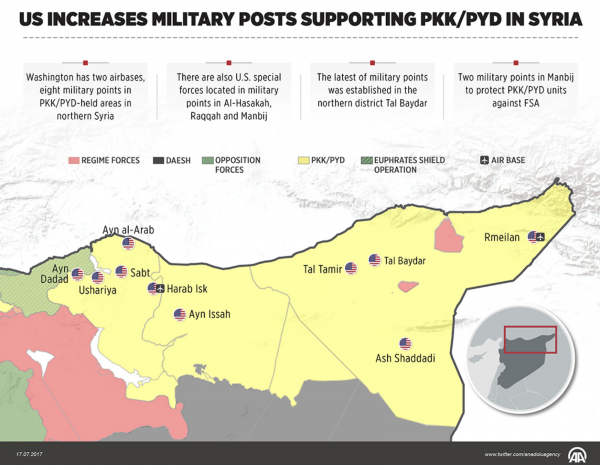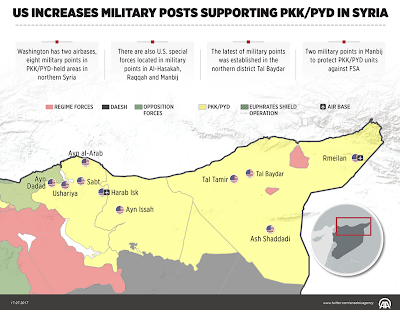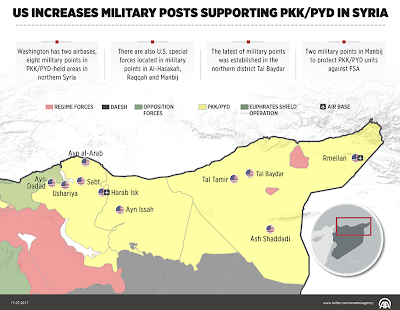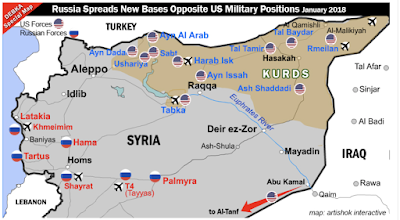
This article was last updated on April 16, 2022
Canada: ![]() Oye! Times readers Get FREE $30 to spend on Amazon, Walmart…
Oye! Times readers Get FREE $30 to spend on Amazon, Walmart…
USA: ![]() Oye! Times readers Get FREE $30 to spend on Amazon, Walmart…
Oye! Times readers Get FREE $30 to spend on Amazon, Walmart…
While the United States may protest, the three main powers in the Syrian conflict recently released a joint statement on the future of the Syrian Arab Republic following their summit in Tehran. Here is a summary of the full text of the summit as agreed up by Iran’s President Hassan Rouhani, Russia’s President Vladimir Putin and Turkey’s President Recep Tayyip Erdogan which you can find here:
“Emphasized their strong and continued commitment to the sovereignty, independence, unity and territorial integrity of the Syrian Arab Republic as well as to the purposes and principles of the UN Charter and highlighted that they should be respected by all. They reiterated that no actions, no matter by whom they were undertaken, should undermine these principles. They rejected all attempts to create new realities on the ground under the pretext of combating terrorism and expressed their determination to stand against separatist agendas aimed at undermining the sovereignty and territorial integrity of Syria as well as the national security of neighboring countries.
Reaffirmed their determination to continue cooperation in order to ultimately eliminate DAESH/ISIL, Al-Nusra Front and all other individuals, groups, undertakings and entities associated with Al-Qaeda or DAESH/ISIL, as they have been designated as terrorists by the UN Security Council. They underlined that, in the fight against terrorism, separation between the above-mentioned terrorist groups and the armed opposition groups that had joined or would join the ceasefire regime, would be of utmost importance including with respect to preventing civilian casualties.
Reaffirmed their conviction that there could be no military solution to the Syrian conflict and that it could only end through a negotiated political process. They reaffirmed their determination to continue active cooperation with a view to advancing the political process in consistence with the decisions of the Syrian National Dialogue Congress in Sochi and the UN Security Council Resolution 2254.
Reaffirmed their resolve to continue joint efforts aimed at advancing the Syrian-led and Syrian-owned process for reaching a political settlement and reiterated their commitment to help establish and launch the work of the Constitutional Committee. They expressed their satisfaction with the useful consultations between their senior officials and the United Nations Secretary General’s Special Envoy for Syria.
Emphasized the need to support all efforts to help all Syrians restore their normal and peaceful life and to alleviate their sufferings. In this regard, they called upon the international community, particularly the United Nations and its humanitarian agencies, to increase their assistance to Syria by providing additional humanitarian aid, facilitating humanitarian mine action, restoring basic infrastructure assets, including social and economic facilities, and preserving historical heritage.
Highlighted the need to create conditions for the safe and voluntary return of refugees and internally displaced persons (IDPs) to their original places of residence in Syria. To this end, they emphasized the necessity of coordination among all relevant parties, including the Office of the United Nations High Commissioner for Refugees (UNHCR) and other specialized international agencies.” (all bolds mine)
There is an strong underlying theme of Syrian self-determination. According to the joint statement, Syrians will retain their sovereignty and it will be Syrians that negotiate the ultimate process for reaching a political settlement. This is obviously not going to sit well with the Americans who have now spread themselves over a brand area in northern Syria as shown on this map from Turkey’s Andalou Agency:
Coincidentally (or perhaps not), some of these bases are immediately adjacent to Syria’s oil producing region as shown on this map:
In mid-2017, approximately thirty to thirty-five thousand barrels of oil were being produced on a daily basis from nearly 350 oil wells controlled by the Kurds (PKK/PYD) and the Assad government.
What is even more concerning is the expansion of Russia’s military might opposite U.S. military positions as shown on this map from Debka:
According to Debka, these four bases are being reconstructed and adapted for use by the Russian Air Force:
1.) The Tiyas Military Airbase (also known as T-4) in the Homs Governorate west of Palmyra, is the largest in Syria. The Russians are massively converting it into their main center of aerial operations in central Syria. Tyas will also provide backup as needed for Khmeimim, if drone, missile and mortar attacks recur.
2.) Palmyra (or Tadmor) Airport provides air support for operations in eastern Syria including the Deir ez-Zour province. Moscow has agreed to share it with Iran. The Revolutionary Guards Al Qods chief Gen. Qassem Soleimani is planning to make Palmyra the main assembly center for the transfer of pro-Iranian Iraqi Shiite militias from southern Iraq to Syria.
3.) From Hama Military Airport west of Hama, the Russians will exercise control from the air of central Syria and the northern and central highways to Damascus. Still more importantly, this airport’s location places it just 125km as the crow flies (173km by road) from Russia’s Tartus naval base on the Mediterranean coast.
4.) Shayrat, at Homs (which became notorious as the target of a massive US Tomahawk attack last year) is the main landing site for air transports which bring the Russian and Iranian forces troop reinforcements, weapons and spare parts.
As Russia and Syrian pro-government forces join to clean up Idlib, what is concerning about the current activities is the unthinkable scenario where Russians accidentally target American forces or Americans accidentally target Russian forces. With the two sides occupying a relatively small battlefield, any errors that lead to multiple military deaths could feed the fires of the new Cold War. While the Russians, Turks and Iranians have proposed a Syrian-driven agenda for the post-civil war Syria, the geopolitical repercussions of a battlefield error could put a sudden end to those plans, leaving millions of Syrian civilians in even deeper jeopardy than they already are.
Click HERE to view more.
You can publish this article on your website as long as you provide a link back to this page.




Be the first to comment